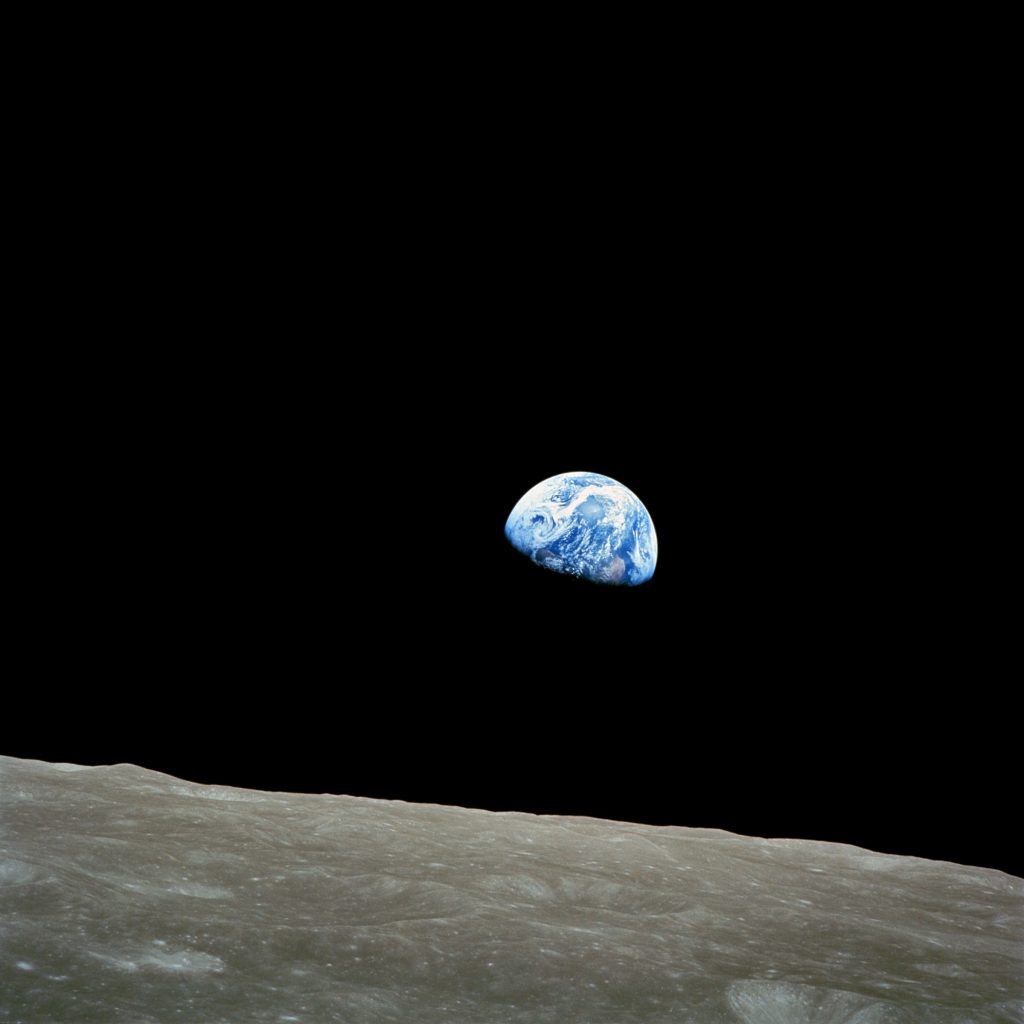Moon Landing Was Easy Compared to Climate Challenge

Amid all the great remembrances these last few days about the first moon landing fifty years ago, I came to a new realization: Putting a man on the moon before the end of the 1960’s was relatively easy compared to the challenge we now face with climate change.
President Kennedy’s bold inspiring goal in 1961 to put a man on the moon is often used as the bar or proof that we “can do anything.” Likening the challenge of climate change to the challenge of landing a man safely on the moon within a decade misses a key difference:
The effort to land on the moon did not inconvenience us at all. Our daily lives continued as before. In fact, there would be new jobs and new industries. Except for the cost to the Federal budget, going to the moon was only a positive. NASA’s Apollo Program cost $150 billion in current dollars and employed 400,000 people directly and through subcontractors.
The technology that was invented and the coordination required was absolutely amazing and deserving of all accolades. No one can help but marvel at what the team organized by NASA accomplished. It still stands as proof of what humans can do with the right challenge, leadership, and resource commitment, but there was essentially no downside or negative.
Solving climate change is very different from the space race. It poses three rather separate challenges, each of which has serious negative impacts:
1. The need for increasing amounts of energy, without warming the planet, as we move towards ten billion people, with increasing energy use per person. Unlike the space race which was only a positive, this is a threat to major sectors of the economy, energy and transportation.
2. How to cope with the “extreme weather” disasters already happening, such as high temperature, drought, deluge rain, wildfires, and severe storms that have started to impact daily lives, agriculture and overall economic productivity. Weather disasters already pose deadly threats and will make feeding the growing population very challenging.
3. Dealing with the unstoppable effects such as rising sea level, the melting polar ice, and the acidification of the oceans. Planning for inevitable sea level rise will require profound adaptation to all coastal communities.
Dealing with those three challenges will be extremely disruptive to billions of people. We like cheap energy, predictable weather, and the coastline being where it has been for all human history. Let’s face it, change is difficult.
Exploring space was optional. Finding solutions for a sustainable, liveable planet is not.
We have already warmed the oceans one degree Celsius, almost two degrees Fahrenheit. That excess heat will continue to work its effect until at least mid-century, melting ice, disrupting weather patterns and causing more and more wildfires and flooding.
To truly solve climate change, we need to set aside the naivete, the “pollyanna” optimism that the solutions can come easily and without disruption to our current way of life.
That photo above from fifty years ago may be helpful for a few reasons. It helps to put our wondrous planet in clearer view, in contrast against the desolate moon and black void of space. Human potential may be limitless, but planet Earth does have limits. We need to re-examine concepts of infinite growth on a finite planet.
Our planet and the richness of life is a magical creation, without any known parallel. We are here at this moment in the history of the known universe when we literally can see the world and our choices with clarity.
In another fifty years – and perhaps much sooner than that – the citizens of the world will look back and marvel at what we do in the coming decades, for good, or for ill. They will marvel at our creativity and capacity –– or at our short-sightedness.
Hopefully we choose a path for which we can be proud and that will be testament to our potential. If putting a man on the moon served as inspiration to greatness here on Earth, it will have served its most important purpose.
Time will tell…
